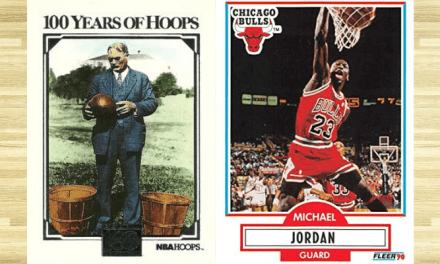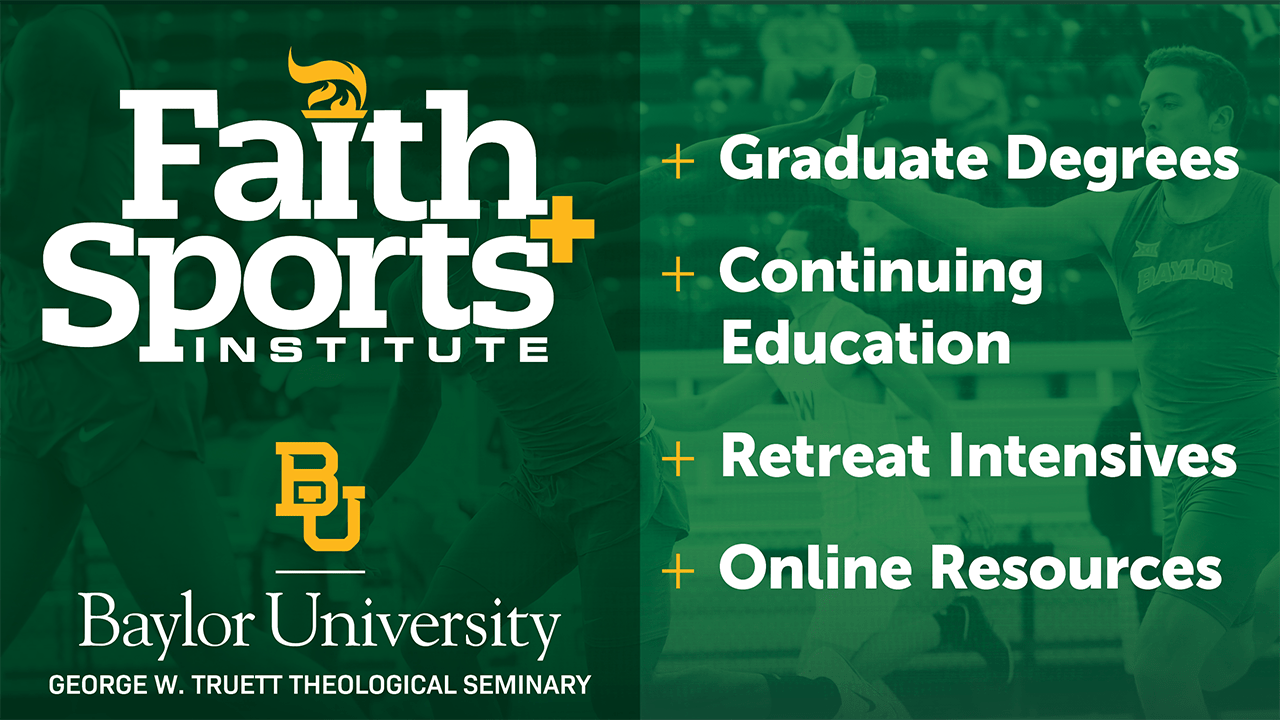
On December 21, 1891, the first game of basketball was played in a Springfield, Massachusetts, gym. Eighteen students at the International YMCA Training School, most of them between the ages of 25 and 30, received instructions from their professor, James Naismith. They divided into two teams of nine with the goal of tossing a soccer ball with their hands into the opposing team’s peach basket.
Just one person succeeded. Final score: 1-0.
Basketball has developed far beyond that rudimentary first game. Played by millions across the globe, it’s a fast-paced sport featuring elements that were entirely absent in 1891: dribbling, jump shots, dunks, fast breaks. Yet, for as much as basketball has evolved, it carries with it many of the basic elements that Naismith laid down when he wrote his original thirteen rules.
Of course, the game never belonged exclusively to Naismith. It was always a collaborative effort, and soon after its founding Naismith played a limited and symbolic role in guiding the sport. Still, while we cannot recover the “true” essence of basketball by turning to any one individual, Naismith does offer a unique window into its meanings and possibilities.
In the spirit of reflecting on those possibilities, here are 13 quotes from Naismith—one for each of the original rules—about the game that he made and his hopes and dreams for the sport. Taken together, they provide a snapshot of Naismith’s philosophy and perspective on basketball and life.
[Note: This post was first published in 2022. To read a newer piece that expands on some of the themes below, check out “Christmas and the Christian Meaning of Basketball.”]
1. “To win men for the Master through the gym.” (1889)
The fact that you’re reading this blog means you probably know about the Christian origins of basketball—a sport developed by an ordained Presbyterian minister working at a training school for Christian leaders in physical education. The “win men for the Master” quote is often cited as evidence of that Christian influence. Yet it’s helpful to understand the full context.
The words came from Naismith’s application to be a student at the International YMCA Training School. One of the application questions asked: “What is the work of a YMCA Physical Director?”
Naismith’s response: “To win men for the Master through the gym.”
The next question on the application put it in a more personal way: “Why do you desire to enter upon the work of a YMCA Physical Director?”
To that, Naismith wrote: “My life work is to do good to men and serve God and wherever I can do this best there I want to go.”
Basketball did not exist when Naismith completed his application, so it wouldn’t be quite right to claim that Naismith created basketball “to win men for the Master.”
At the same time, the quote does capture something important about Naismith’s motivations and priorities. It was within the broader context of his desire to serve God through physical education that Naismith had the opportunity to create a new sport.
2. “Whenever I witness games in a church league, I feel that my vision, almost half a century ago, of the time when the Christian people would recognize the true value of athletics, has become a reality.” (1930s)
At the end of his life Naismith marveled at the way Christian leaders supported organized sports. It was a far cry from his experience growing up in Canada, where many of his fellow Presbyterians warned against playing sports. They saw it as a useless diversion and an entryway into vice and sin.
Naismith helped to change that. As part of the muscular Christianity movement, he viewed athletics as a new arena for Christian ministry, and he encouraged church leaders to embrace sport as an ally in their efforts to attract men to church and build Christian character.
3. “Basketball is personal combat without personal contact.” (1910)
In my view, no single sentence better captures Naismith’s vision for basketball.
Naismith created the sport to meet a practical need. He wanted a team game that could be played indoors in the winter months. And he also wanted a sport that could capture the imagination and interests of a competitive group of young men, while removing the roughness of football.
In basketball, players are in close proximity to their opponents, occupying the same spaces and zones. And yet they are not allowed—in theory at least—to simply overpower their opponent. They must rely instead on agility, skill, cooperation, and creativity.
Of course, personal contact is and always has been part of basketball. Bodies crash into each other, and there is elbowing, shoving, and tripping. But the referee’s whistle is always close at hand to keep the physical contact in check, allowing for the “personal combat” to flourish beyond direct physical contact.
4. “You will see that the aim of the game is to develop the man and not to make money or even to draw a crowd and while the latter objects are good yet I feel that the other ought to be a chief purpose for which the game should be played.” (1898)
Naismith wrote these words seven years after he created the game, in a letter to a student who wanted to know more about its origins. They reveal an additional reason Naismith wanted a game defined by “personal combat without personal contact”: he felt those emphases would produce the optimal conditions for building character and developing men.
Although Naismith quickly realized that basketball had commercial appeal and that people were willing to pay money to watch a game, he was never interested in profiting off the sport. Instead, the thing that excited him most about basketball was its potential for character development.
5. “The best definition of character I know is: It is that combination of reflexes within me which determine how I shall act under unforeseen circumstances. The reflexes you build on the floor are going to become a part of your character.” (1932)
If Naismith believed that basketball could develop character in its participants, how did that process work?
This quote from Naismith, delivered in a 1932 speech, captures his perspective. In his mind basketball was a laboratory for developing moral attributes, a space where athletes could be tested and tried as they built up character traits that would carry over into the rest of their lives.
Naismith was so passionate about the character traits developed through sports he catalogued thirty-six of them:
6. “Some of the finest sportsmanship has been exhibited in women’s basketball games. They never had the chance to do that sort of thing and get into the line of sportsmanship. I felt if basketball did not do anything else than relieve womankind from that condition, it was well worth putting into existence.” (1932)
Naismith created basketball for men. But within a few months women took an interest and began to play the sport, too. This was a remarkable development, because at the time there were few opportunities for women to play competitive team sports.
Senda Berenson, an instructor at Smith College who introduced the game to her students in 1893, explained it like this:
“The value of athletic sports for men is not questioned. It is a different matter, however, when we speak of athletics for women,” she wrote. “Until very recent years, the so-called ideal woman was a small waisted, small footed, small brained damsel, who prided herself on her delicate health.”
Thanks to women like Berenson who made the game their own, basketball became arguably the most significant team sport for women in the twentieth century. Importantly, too, Berenson was a Jewish woman. Basketball may have started within a Christian context, but it quickly became a game that belonged to all.
7. “No prettier sight can be found in athletic achievement than in a game where the ball, without any preconceived plan, passes from man to man in a series of brilliant movements and lands in the goal, or is cleverly intercepted when a goal seems inevitable. We watch such a game with an increasing admiration for the wonderful capacity of the human frame for accomplishing the seemingly impossible.” (1914)
More than anything else, Naismith loved the character-building potential of sports. And yet he also appreciated the opportunity it offered for joy and free expression. Basketball, for him, had both instrumental and intrinsic value.
Jeremy Treat, a pastor and theologian, argues that Christians should be more willing to recognize sport as an intrinsic good. “Play need not be justified by its effects, be it psychological (peace of mind), physical (better health), social (learning teamwork),” Treat writes. Instead, participation in sports can be received as a gift, offering an opportunity for “creatively delighting in and enjoying God’s good creation for its own sake.”
Naismith’s delight in creative basketball play bears witness to the intrinsic good of his game.
8. “Why should the play of a group of young men be entirely spoiled to further the ambitions of some coach?” (1930s)
Naismith’s joy in the sudden and surprising moves of a player stood in contrast to his perspective on coaches. Put simply, Naismith was concerned that coaches mechanized the game, pursuing victories at the expense of developing people.
A coach could drill his players to follow orders, Naismith admitted, and win plenty of games. But this created dependence rather than independence. It turned players, he warned in 1914, into a cog in the machine rather than a “broad and independent” young man able to “depend on his own resources” once the game came to an end.
This perspective on coaching helps to explain Naismith’s own lackluster record. He launched the men’s basketball team at Kansas after arriving there in 1898. Yet he remains the only coach in the program’s history to have a losing record (55 wins and 60 losses).
9. “Fathers are always right.” (1933)
Although Naismith had his concerns with overbearing coaches, he understood the potential value of a coach. In his role as a physical education instructor at Kansas he trained and mentored future coaches, none more significant than John McLendon.
McLendon enrolled at Kansas in 1933 with hopes of pursuing a career in sports. He couldn’t join Phog Allen’s basketball squad because Kansas did not allow Black players on its sports teams at that time. But Naismith was still a professor at the school. So McLendon’s father suggested that he seek out Naismith; surely McLendon could learn the game from the man who created it.
Here’s how McLendon explained it years later:
”Tell him that he’s to be your adviser,” my father said.
I did just that, and Dr. Naismith said, ”Who told you this?”
”My father,” I said.
”Fathers are always right,” Dr. Naismith said.
Over the next four years McLendon completed his studies as a physical education major under Naismith’s direction. He then embarked on a remarkable Hall-of-Fame coaching career, breaking racial barriers along the way.
“Everything I ever did when I was coaching,” McLendon said, “I can trace back to learning it from him.”
That included the fast break and full-court press, as well as an emphasis on the spiritual potential of coaching. “Dr. Naismith said I owed it to myself, to my profession, and to those I was coaching to be the best example of Jesus Christ and his teaching that I could be,” McLendon said in a 1969 interview. “I’ve tried to do so.”
10. “There seems to be a great tendency to forget or to lose respect for the past….The realization seems lacking that only on a thorough knowledge of the past can the present and future be mapped wisely.” (1937)
Naismith delivered these words in a speech just two years before he died. For him, remembering the past was not simply about nostalgia for the glory days; he believed history offered wisdom for the future.
For those of us who want basketball to live up to its potential, we can’t rewind the clock and return the game to its roots. But we can learn from the past, and in that way we can shape the game in positive directions for the next generation.
11. “The greatest change in basketball has taken place in the skill with which the game is played. Beginning with no experience, each generation that has played basketball has passed on some new developments to the next. The technique and expertness with which the game is now played are indeed wonderful to me.” (1930s)
If history can help us chart a course for the future, it can also help us maintain perspective in the present, recognizing our dependence on the past. While it’s fun to imagine that there might be a single player who towers above the rest—an identifiable Greatest Of All Time—the truth that Naismith recognized is this: Every basketball player stands on the shoulders of those who came before, drawing on skills, concepts, and techniques that have been passed down to them.
When you watch Steph Curry splash threes or Lebron James masterfully direct a game, you can appreciate their individual greatness while also recognizing their dependence on the innovations of previous generations.
12. “Let us all be able to lose gracefully and to win courteously; to accept criticism as well as praise; and last of all, to appreciate the attitude of the other fellow at all times.” (1930s)
This is the closing sentence of Naismith’s book, Basketball: Its Origins and Development, which was published two years after his death. In that sense it represents his last words to the world, his final encouragement to those who would continue to nurture and cultivate the sport.
In our culture, both then and now, the drive to be a winner (or to be associated with a winner) is often the most important thing. It’s the end goal. For Naismith, however, the ultimate goal was the desire to be a certain kind of person, one marked by integrity, humility, and empathy. He believed basketball done right could be a space where those traits were developed.
13. “I want to leave the world a little bit better than I found it.” (1932)
In 1932, for a speech on the origins of basketball, Naismith reflected on the youthful idealism and sense of mission that inspired his career path.
There’s no better way to end than by quoting his words in full:
“Way back in my college days I was lying on the bed one Sunday and thought: What is this all about? What is life about? What are you going to do? What are you going to be? What motto will you hold up before you? I put up on the wall, not in writing, but in my mind this thought: ‘I want to leave the world a little bit better than I found it.’ That is the motto I had then and it is the motto I have today. That has been a mighty fine thing to me.”
Notes
[1] James Naismith’s Original Application to Springfield College (1889)
[2] Naismith, Basketball: Its Origins and Development (1941)
[3] Naismith, “Fundamentals of Basketball” (1910)
[5] Naismith, “The Origin of Basketball” (1932)
[6] Naismith, “The Origin of Basketball” (1932)
[7] Naismith, “Basket Ball,” in American Physical Education Review (1914)
[8] Naismith, Basketball: Its Origins and Development (1941)
[9] Naismith’s words recalled by John McLendon (1996)
[10] Speech delivered in Lawrence, Kansas (1937)
[11] Naismith, Basketball: Its Origins and Development (1941)
[12] Naismith, Basketball: Its Origins and Development, (1941)
[13] Naismith, “The Origin of Basketball” (1932)
Along with the sources listed above, to read more about Naismith and the early development of basketball check out these books:
- Rob Rains, James Naismith: The Man Who Invented Basketball
- Douglas Stark, ed. The James Naismith Reader: Basketball In His Own Words
- Milton Katz, Breaking Through: John B. McLendon, Basketball Legend and Civil Rights Pioneer
- Pamela Grundy and Susan Shackelford, Shattering The Glass: The Remarkable History Of Women’s Basketball
- Claude Johnson, The Black Fives: The Epic Story of Basketball’s Forgotten Era
You can also read other pieces I’ve written related to basketball, Naismith, and muscular Christianity:
- “The Witness of the Black Church Rings Through NBA History,” Christianity Today
- “Basketball’s Christian Origins,” Q&A with Pro Hoops History
- “Tracing the Historical Contours of Black Muscular Christianity,” International Journal of the History of Sport
- “What Would James Naismith Think About Michael Jordan and the Last Dance?” Faith & Sports Blog





